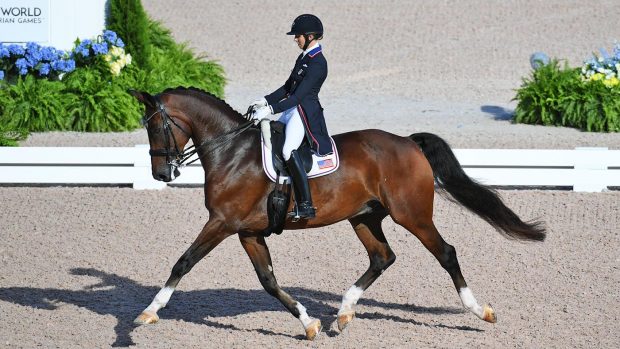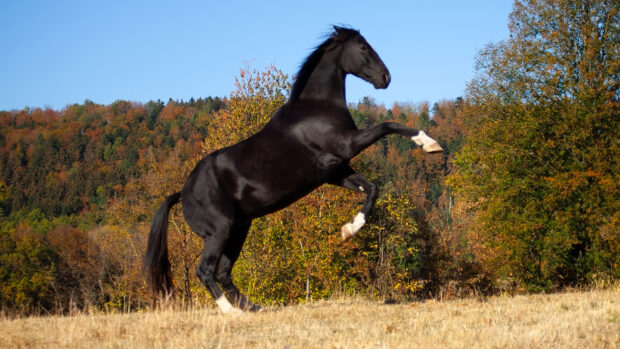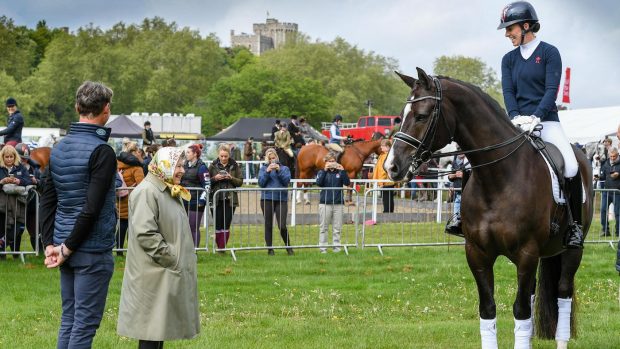Ingrid Klimke says “character is the most important thing” when choosing young horses.
“I like to sit on a horse and feel if he has the character to say, ‘What are we doing today?’” said the German dressage and eventing championship medallist in a talk at Wellington Riding earlier this month (1 March).
She continued: “If he’s a bit lazy and needs to think twice about things, you must know training him will take longer.
“I trust my feeling – it doesn’t matter if it’s a mare or gelding or stallion or bred by someone famous or a full brother to a top horse, you must feel the horse. I like to have the horse in my barn, ride him a few times and get to know him. If you just see on video or hop on him once, it’d hard to know what is behind them.
“I always say for a good horse I always have an empty stall and luckily the good ones keep coming.”
Ingrid says she also prioritises physical health and strength these days, having been caught out in her earlier years by hoping for the best with horses with small health issues.
“Things can happen anyway, but now if my trusted vet says there is a problem which in the future could come out earlier than 14 or 16, I don’t compromise,” she said, explaining it takes six years to produce a horse to the top level at 10 and you don’t want that career to be over at 12. “It is heart-breaking to have a superstar who isn’t strong enough, isn’t healthy enough.”
For dressage horses, Ingrid recommends looking closely at the hindlegs and the energy a horse has behind, as horses need a very good hindleg for piaffe, passage and pirouettes.
“I would say three good gaits and you always wish to have everything, but I learnt from my father that we make the horse over many years and we have to make compromises,” she said, giving the example of a horse she had who did not have a giant walk, so would never score more than seven in that pace, but excelled in trot.
Ingrid Klimke’s young horses have an all-round education until the end of their six-year-old year, when they start to specialise in either eventing or dressage. After that point, the dressage horses still hack and do small jumps and cavaletti, but they don’t do dedicated conditioning work on hills or cross-country fences.
“You need them to focus – it takes another three years so you hope that when they are nine, they have all the grand prix movements,” she said.
You might also be interested in:

Anna Ross: training young horses to be sound and healthy – in mind and body

Mutual respect and good equine citizens: giving horses the best start in life

‘Why the rush?’ Equine physio speaks up on young horses doing too much, too soon

12 training principles from Olympic medallist and former European champion Tina Cook

Subscribe to Horse & Hound magazine today – and enjoy unlimited website access all year round
Horse & Hound magazine, out every Thursday, is packed with all the latest news and reports, as well as interviews, specials, nostalgia, vet and training advice. Find how you can enjoy the magazine delivered to your door every week, plus options to upgrade your subscription to access our online service that brings you breaking news and reports as well as other benefits.




